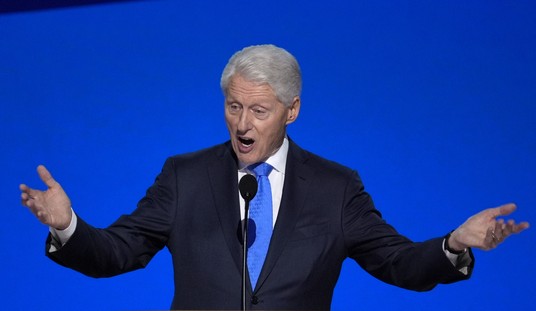Factory output dropped by the largest amount in the past year, the Commerce Department announced yesterday. The news cast a pall over Wall Street, and declines in two regional indexes of activity contributed to losses in the stock market. It appears to signal that whatever growth we have experienced since last summer will be as much as we’ll see for the near- to mid-term future:
New evidence of a slowing economic rebound emerged Thursday in reports that manufacturing activity is slowing after helping drive the early stages of the recovery.
Factory output fell in June, according to a government report on industrial production. It was the sharpest monthly drop in a year. And two regional manufacturing indexes sank this month. …
Separately, the Labor Department said wholesale prices fell for a third straight month. Prices were pulled down by a drop in energy costs and the biggest plunge in food costs in eight years. But excluding those two volatile commodities, inflation was nearly flat. …
Adding to concerns in the manufacturing sector were steep drops reported Thursday in the Empire State and Philadelphia Fed Manufacturing indexes.
Here’s the problem. An economic expansion after a significant recession starts off with an increase in demand, which empties inventories as businesses hold off on restocking until they feel confident in the demand. When that happens, it triggers an expansion of manufacturing and wholesale sales activity as businesses restock to avoid losing sales. That’s exactly what we saw in 2009Q4 and 2010Q1, when economic growth was mainly tied to inventory management rather than end-of-cycle sales.
Demand and retail activity did rise in those quarters — for a short period of time. However, the decline in employment continued. Even though jobs are a lagging indicator, demand requires confidence in a return of jobs. Businesses restocked their shelves but with the bad news on the employment front, demand has slacked off. Now we’re at the end of the expansion cycle without having experienced much real expansion at all.
Does that mean we’re heading into a double-dip recession? Not necessarily, but it does mean we’re heading into anemic growth at best for the next few quarters. Having a 2.7%-3% GDP in 2010 won’t put people back to work, and it may not even be that good for the last half of the year, under these conditions. Without having good reason to take risks, people holding capital will continue to shelter it rather than invest, and that means a long, dry year for the American economy.







Join the conversation as a VIP Member